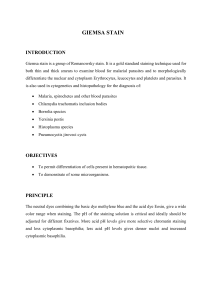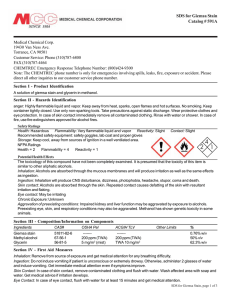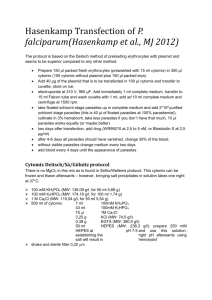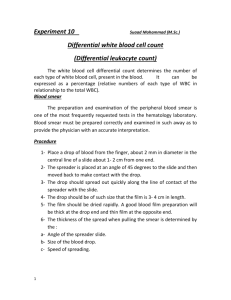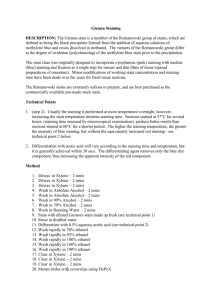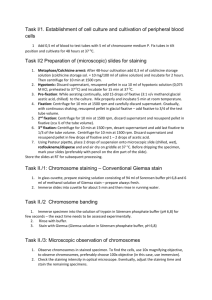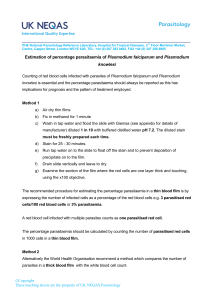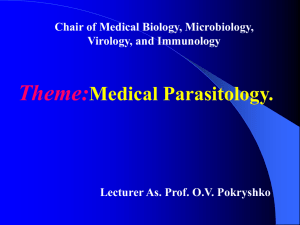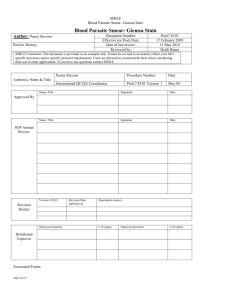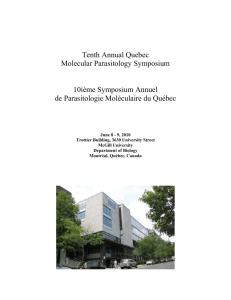Parasite Diagnostic Lab
advertisement
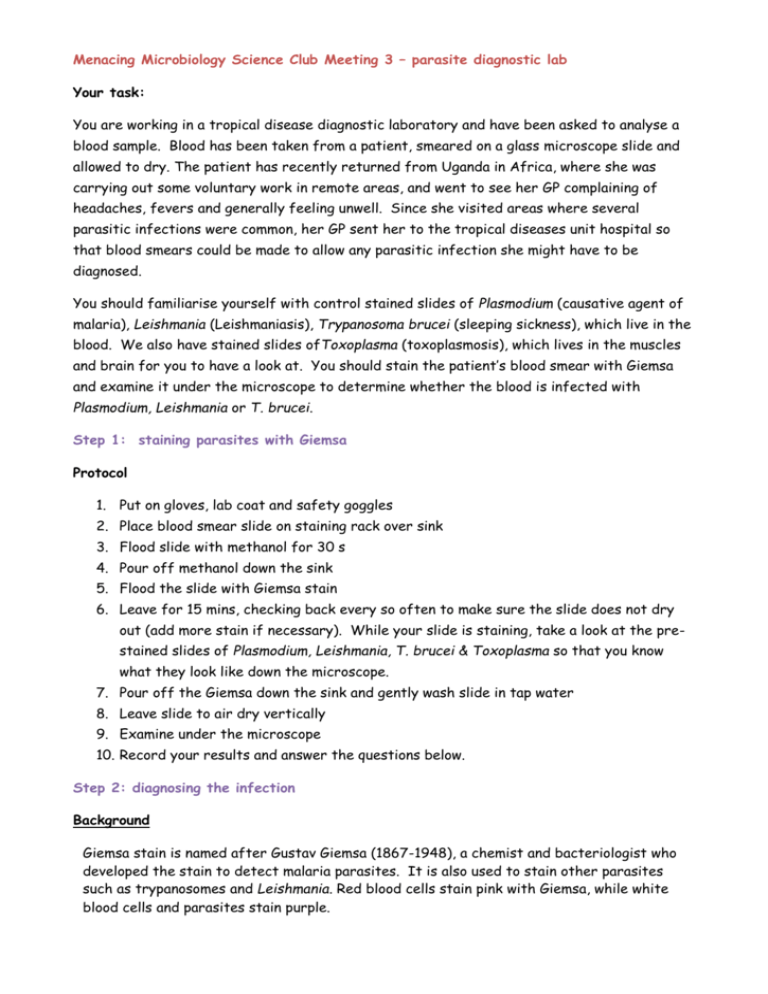
Menacing Microbiology Science Club Meeting 3 – parasite diagnostic lab Your task: You are working in a tropical disease diagnostic laboratory and have been asked to analyse a blood sample. Blood has been taken from a patient, smeared on a glass microscope slide and allowed to dry. The patient has recently returned from Uganda in Africa, where she was carrying out some voluntary work in remote areas, and went to see her GP complaining of headaches, fevers and generally feeling unwell. Since she visited areas where several parasitic infections were common, her GP sent her to the tropical diseases unit hospital so that blood smears could be made to allow any parasitic infection she might have to be diagnosed. You should familiarise yourself with control stained slides of Plasmodium (causative agent of malaria), Leishmania (Leishmaniasis), Trypanosoma brucei (sleeping sickness), which live in the blood. We also have stained slides ofToxoplasma (toxoplasmosis), which lives in the muscles and brain for you to have a look at. You should stain the patient’s blood smear with Giemsa and examine it under the microscope to determine whether the blood is infected with Plasmodium, Leishmania or T. brucei. Step 1: staining parasites with Giemsa Protocol 1. Put on gloves, lab coat and safety goggles 2. Place blood smear slide on staining rack over sink 3. Flood slide with methanol for 30 s 4. Pour off methanol down the sink 5. Flood the slide with Giemsa stain 6. Leave for 15 mins, checking back every so often to make sure the slide does not dry out (add more stain if necessary). While your slide is staining, take a look at the prestained slides of Plasmodium, Leishmania, T. brucei & Toxoplasma so that you know what they look like down the microscope. 7. Pour off the Giemsa down the sink and gently wash slide in tap water 8. Leave slide to air dry vertically 9. Examine under the microscope 10. Record your results and answer the questions below. Step 2: diagnosing the infection Background Giemsa stain is named after Gustav Giemsa (1867-1948), a chemist and bacteriologist who developed the stain to detect malaria parasites. It is also used to stain other parasites such as trypanosomes and Leishmania. Red blood cells stain pink with Giemsa, while white blood cells and parasites stain purple. Results Using the microscopes and the laminated sheets, fill in this table for the control pre-stained parasites. You may like to draw the parasites you see. Parasite What cell type does it live inside or does it live extracellularly? What shape is it? How big is the parasite compared to the red or white blood cells? Plasmodium Leishmania T. brucei Toxoplasma Now make a labelled sketch of your patient’s blood smear. Can you see any parasites? Based on your analysis of the parasites above, what do you think your patient might be infected with? Sketch: Now compare your observations of the parasites with those of the bacteria you analysed last time. Which organisms are bigger – parasites or bacteria?
